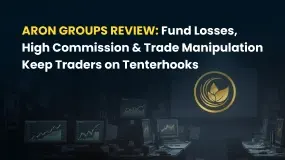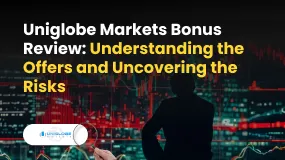简体中文
繁體中文
English
Pусский
日本語
ภาษาไทย
Tiếng Việt
Bahasa Indonesia
Español
हिन्दी
Filippiiniläinen
Français
Deutsch
Português
Türkçe
한국어
العربية
Learn This & Never Blow An Account Ever Again!
Abstract:The projected returns on a particular investment are weighed against the risk of loss using a mathematical formula known as the risk-reward ratio. Many traders may think that they have fully understood this concept but today’s article could shine a different light on this risk-reward concept like never before. Keep reading to learn more!

In the world of trading, the concept of risk and reward holds paramount importance, even more so than market analysis, as it determines the longevity and profitability of a trader's journey. Understanding the fundamental rule of the market, calculating risk per trade, and leveraging risk-to-reward ratios are crucial aspects that differentiate traders from mere gamblers, ultimately paving the way for consistent gains and avoiding catastrophic losses.
Before delving into the specifics of risk and reward, it is crucial to remember the fundamental rule of the market: “Each moment in the market is unique,” as emphasized in Mark Douglas's influential book, “Trading in the Zone.” Regardless of one's analytical prowess, the possibility of being wrong and losing trades always exists. Therefore, implementing proper risk management strategies is essential.

To begin, risk per trade must be calculated. Thinking in terms of percentages, rather than dollar amounts, in relation to the total account balance is crucial. Let's consider an example for clarity. Suppose you have a $1,000 trading account and decide to risk 3% per trade, which amounts to $30. If you enter a trade with a 30-pip stop loss and a 90-pip profit target (a 1:3 risk-to-reward ratio), calculating the appropriate lot size is crucial. With the allocated risk of $30, a lot size of 0.1 (where each pip is valued at $10) aligns with your risk management strategy. If the trade is successful, you stand to make $90.
The power of risk-to-reward ratios becomes even more evident when applied to different account sizes. Imagine you have a $100 trading account and wish to risk the same 3% per trade ($30). In this scenario, you opt for a tight 3-pip stop loss. As the stop loss is smaller, you can increase your lot size to 1. With a 90-pip profit target, the potential gain becomes a remarkable $900. This exemplifies the significance of aligning risk and reward ratios in pursuit of higher gains.
While the concept of calculating risk per trade may be understood by many traders, the key lies in realizing that the percentage risk remains fixed regardless of the stop loss distance. By implementing this approach consistently and seeking trades with favourable risk-to-reward ratios, traders can witness substantial account growth and achieve their financial goals.
In conclusion, successful trading revolves around the art of risk management and understanding the relationship between risk and reward. By calculating risk per trade, adhering to a predetermined risk percentage, and identifying favourable risk-to-reward ratios, traders can navigate the markets with confidence, ensuring their long-term survival and unlocking the potential for significant gains. Embrace the principles of risk management, and watch your trading journey transcend from one of uncertainty to one of consistent profitability.

Disclaimer:
The views in this article only represent the author's personal views, and do not constitute investment advice on this platform. This platform does not guarantee the accuracy, completeness and timeliness of the information in the article, and will not be liable for any loss caused by the use of or reliance on the information in the article.
Read more

Apex Markets Review: Traders Outraged Over Withdrawal Denials & Other Trading Issues
Struggling to access fund withdrawals from Apex Markets for months? Does the broker remain silent on fund withdrawal issues? Does the Saint Vincent and the Grenadines-based forex broker reject your winning trades? Have you failed to get a refund into the card used for deposits? Did the broker deduct from your trading account instead? Traders have been imposing these scam allegations while sharing the Apex Markets Review online. We read the reviews and shared some of them below. Take a look!

tastyfx Exposed: Fund Losses, Trade Manipulation & Account Related Hassles Hurt Traders
Are fund losses normal for you at tastyfx? Does the US-based forex broker constantly manipulate prices to hit your trading experience? Do you fail to receive a reply from the broker on your fund withdrawal requests? Do you constantly face trading account issues with tastyfx? It’s time to read the tastyfx review shared by traders online.

Aron Groups Review: Fund Losses, High Commission & Trade Manipulation Keep Traders on Tenterhooks
Have you lost your hard-earned capital while trading via Aron Groups Broker? Has the high commission charged by the broker substantially reduced your trading profits? Does the Marshall Islands-based forex broker constantly manipulate spreads to widen your capital losses? Have you been lured into trading courtesy of Aron Groups No Deposit Bonus, only to find that you had to deposit capital to get a bonus? All these and many more trading issues have become synonymous with the experience of Aron Groups’ traders. Consequently, many traders have shared negative Aron Groups reviews online. In this article, we have shared some of their reviews.

Uniglobe Markets Bonus Review: Understanding the Offers and Uncovering the Risks
Many traders start looking for a new broker by searching for special deals and bonuses. The phrase "Uniglobe Markets no deposit bonus" is something people often search for. Let's address this question clearly and directly. Based on all the information we have, Uniglobe Markets does not currently offer a no-deposit bonus. Instead, this broker focuses on bonuses that require you to deposit your own money first. To get any bonus credits, traders must put in their own capital. Read on to learn how this entire bonus works out for traders.
WikiFX Broker
Latest News
Angel one 2025 Review & Complaints
Latest FCA Daily Alerts and Consumer Warnings for 2025
Webull Widens Crypto Futures with Coinbase Derivatives
Is Nash Markets Regulated or Risk? Truth About Nash Markets’ License & Withdrawal Issues
CySEC Blocks Certification Access to Combat Advisor Impersonation
Exclusive Markets Under the Scanner: Traders Report High Swap Charges, Deposit Discrepancies & More
Pinched By Penny Shortage, US Retailers Beg Congress To Step In
PINAKINE Broker Review: A Complete Look at Its Services and Risks
Voices of the Golden Insight Award Jury - Simon So, Chief Experience Officer of Hantec Financial
The United States Outgrows All Its Major Peers
Currency Calculator




